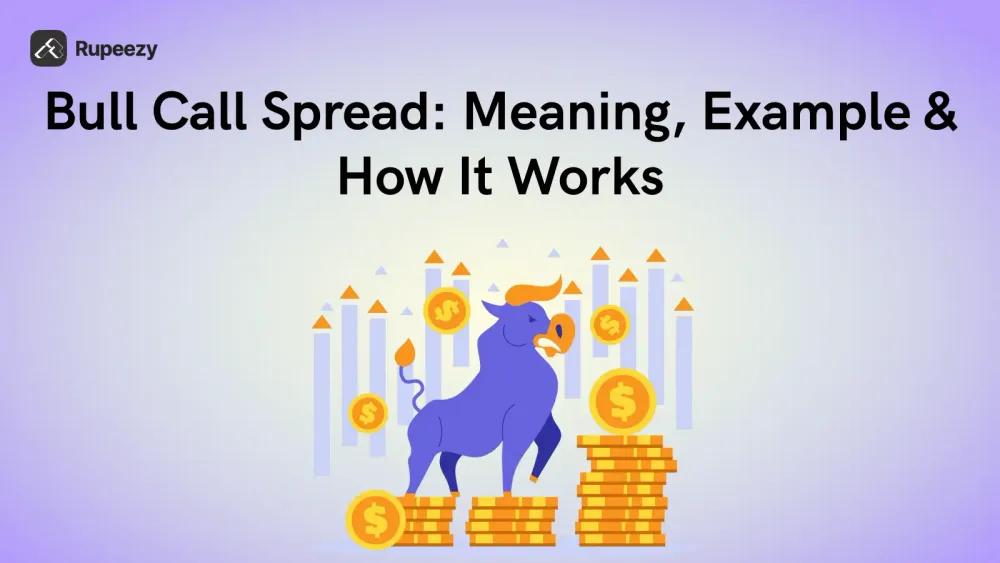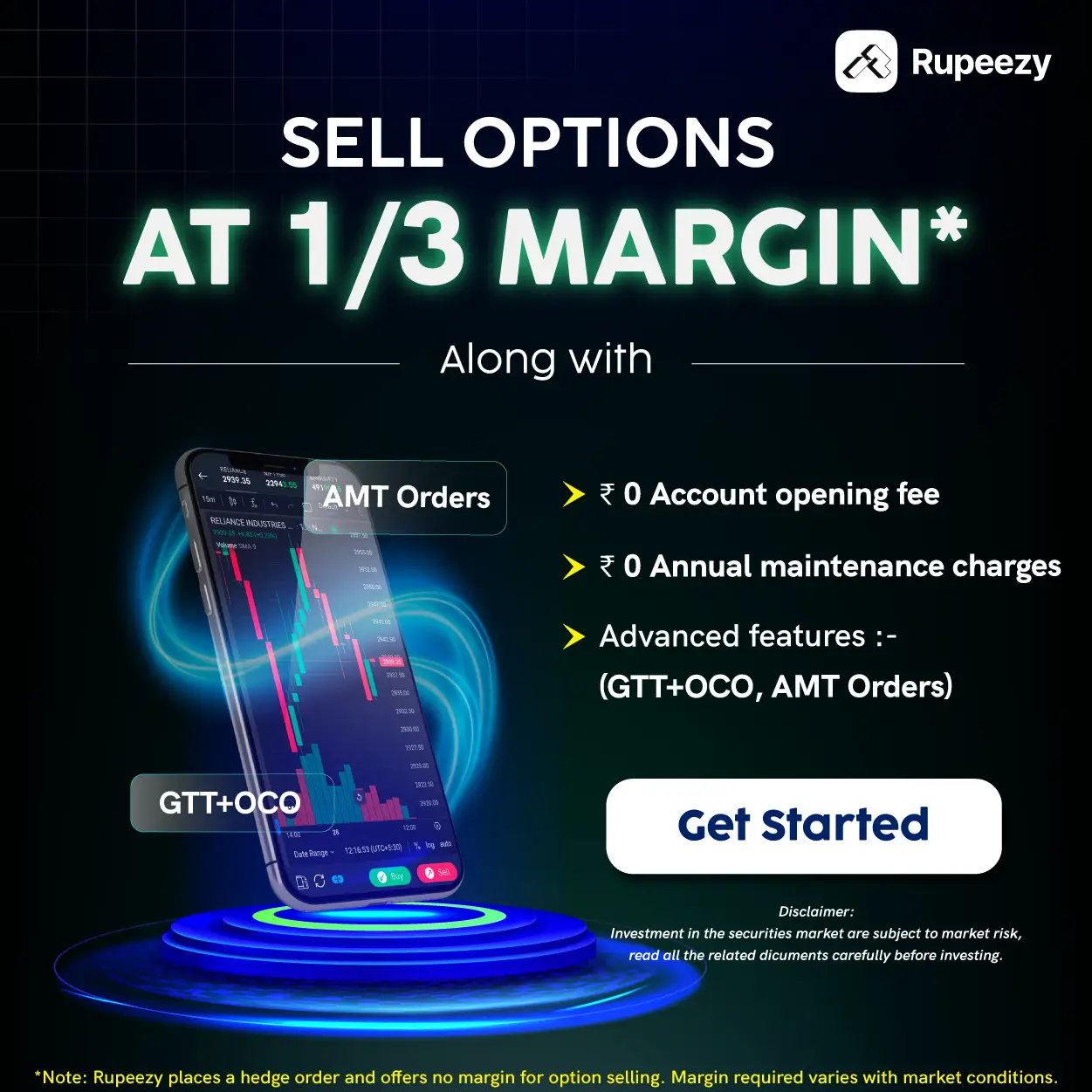Bull Call Spread: Meaning, Example & How It Works


00:00 / 00:00
When you trade in futures and options, you will find many strategies built to control risk while targeting steady gains. The aim here is simple: to ensure that the traders gain good returns on their investment without paying a heavy premium.
This is mainly applicable in the put and call option trading. But there is one such strategy that many traders follow to minimize losses. It is the bull call spread strategy. It helps you take a bullish view without paying a heavy premium and keeps your maximum loss limited. Though it is not used in all situations, this is one of the finest strategies to try.
But the question is, what is a bull call spread strategy? Well, read this guide to know everything you need to know about the bull call spread option strategy. So, let us get started here without delay.
What Is Bull Call Spread Strategy
A bull call spread strategy is an options approach. It is one plan where a trader buys a call option at a lower strike price and sells another call option at a higher strike price with the same expiry.
The idea is to benefit from a moderate rise in the asset price. The option premium received from the sold call reduces the total cost. This helps in making the strategy more affordable. Your maximum loss stays limited to the net premium paid. This way, profit is capped at the difference between the strikes.
Some of the key attributes of the bull call spread strategy are as follows:
1. Two Call Options
You buy a lower strike call and sell a higher strike call.
2. Same Expiry
Both options expire on the same date to keep the spread aligned.
3. Limited Risk
Your maximum loss is the net premium you pay for the spread.
4. Limited Profit
Your profit is capped. It is the one that is the difference between the strike prices and the net premium.
5. Best for Mild Bullish View
It works when you expect a small but steady price rise, not a sharp rally. This will be the best time when you can benefit from even small movements.
Formulas for Bull Call Spread
To understand the result of the trade, you can calculate the risk, reward, and break-even. This is done using the simple formulas as follows:
Maximum Profit = Strike Price of Short Call - Strike Price of Long Call - Net Premiums
Maximum Loss = Net Premiums
Break Even Point = Strike Price of Long Call + Net Premiums
Example
To understand this options trading strategy better, here is a simple bull call spread strategy example.
Let us assume a stock is trading at Rs. 500, and you expect a slow upward move. To keep the cost in control, you set up a bull call spread.
You buy a 500 Long Call for a premium of Rs. 20.
You sell a 520 Short Call for a premium of Rs. 10.
This gives us the net premium, which is;
Net Premiums = 20 - 10 = Rs. 10
Now, let us appropriately apply the formulas as follows:
Maximum Profit = Strike Price of Short Call - Strike Price of Long Call - Net Premiums = 520 - 500 - 10 = Rs. 10
Maximum Loss = Net Premiums = Rs. 10
Break Even Point = Strike Price of Long Call + Net Premiums = 500 + 10 = Rs. 510
If the stock closes at or above 520, you earn the full Rs. 10 profit. If it stays between 510 and 520, you gain partially. If it ends below 500, your loss is limited to the Rs. 10 net premium.
Types of Bull Call Spread
A bull call spread can be understood in two simple forms. This will be based on the role you take inside the spread. This is one of the main reasons why most of the option trading brokers prefer going for this strategy.
Now, it is important to note that both use the same expiry and work together, but each leg serves a different purpose. Here are the two types that you should know of:
1. Long Call Spread
This is the part where you buy the lower strike call. It is the core bullish leg of the strategy. You enter this to gain from any upward price movement. The long call gives you the right to buy at a fixed price, allowing the spread to start gaining value as the market rises.
2. Short Call Spread
This is the part where you sell the higher strike call. You add this leg to reduce the total premium you must pay. The premium you collect lowers your cost and defines the cap on your profit. The short call also ensures that your risk stays limited because the net premium becomes your maximum loss.
Pros and Cons of Bull Call Spread
When you trade in the stock market using the bull call spread, you trade in a controlled way to benefit from a moderate rise in the market. It reduces the premium cost and keeps your risk defined, but it also limits how much you can earn. These points help you see both sides clearly.
Pros
Lower premium cost because the short call reduces the overall expense.
Maximum loss is limited to the net premium you pay.
Maximum profit is known in advance to ensure you trade easy.
Works well when the market is expected to rise slowly.
Cons
Profit is capped once the price reaches the higher strike.
You need the direction to be right for the strategy to work.
Two legs must be managed together, so pricing needs attention.
Effect of Implied Volatility on Bull Call Spread
Implied volatility affects the pricing of both legs in a bull call spread, but the impact stays balanced because you buy one call and sell another. So, here are the aspects of the volatility that you should know of:
1. Higher Implied Volatility
Higher IV increases the premium of both the long call and the short call. The spread becomes slightly costlier, but the rise in the short call premium offsets part of that increase.
2. Lower Implied Volatility
Lower IV reduces the premium of both legs. This makes the spread cheaper to enter, but the long call benefit may reduce more than the short call premium you collect.
3. Net Impact
Because you hold one long call and one short call, IV changes do not hit you strongly. The strategy remains relatively stable compared to buying a naked call.
Conclusion
A bull call spread is a simple way to take a controlled bullish position without paying a high premium. It works best when you expect a steady rise rather than a sharp rally. Your risk stays limited to the net premium, which is again a benefit for you.
Also, your profit range is defined, and the strategy remains stable even with changes in implied volatility. For many traders, this balance of cost and control helps make a practical choice in the options market.
Start your options journey on Rupeezy and explore smarter trading strategies with clear guidance and easy tools.
FAQs
What is the main purpose of a bull call spread?
It helps you take a bullish view at a lower cost while keeping risk limited.
When does a bull call spread give maximum profit?
You get maximum profit when the price reaches or crosses the higher strike by expiry.
Is the loss limited in a bull call spread?
Yes, your maximum loss is the net premium you pay for the spread.
Does implied volatility impact this strategy a lot?
Not much, because the long and short call premiums offset each other.
Who should consider using a bull call spread?
Traders expecting a mild upward move and wanting controlled risk can use this strategy.
The content on this blog is for educational purposes only and should not be considered investment advice. While we strive for accuracy, some information may contain errors or delays in updates.
Mentions of stocks or investment products are solely for informational purposes and do not constitute recommendations. Investors should conduct their own research before making any decisions.
Investing in financial markets are subject to market risks, and past performance does not guarantee future results. It is advisable to consult a qualified financial professional, review official documents, and verify information independently before making investment decisions.

All Category










